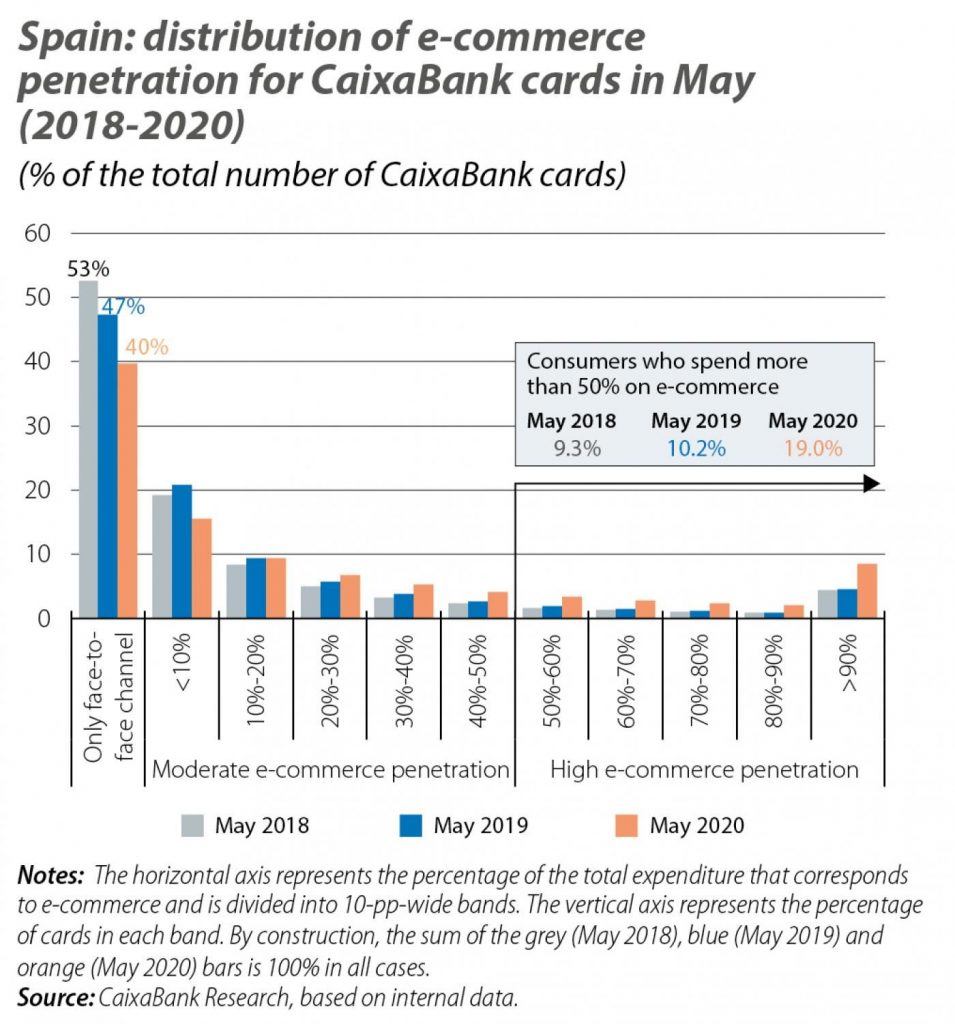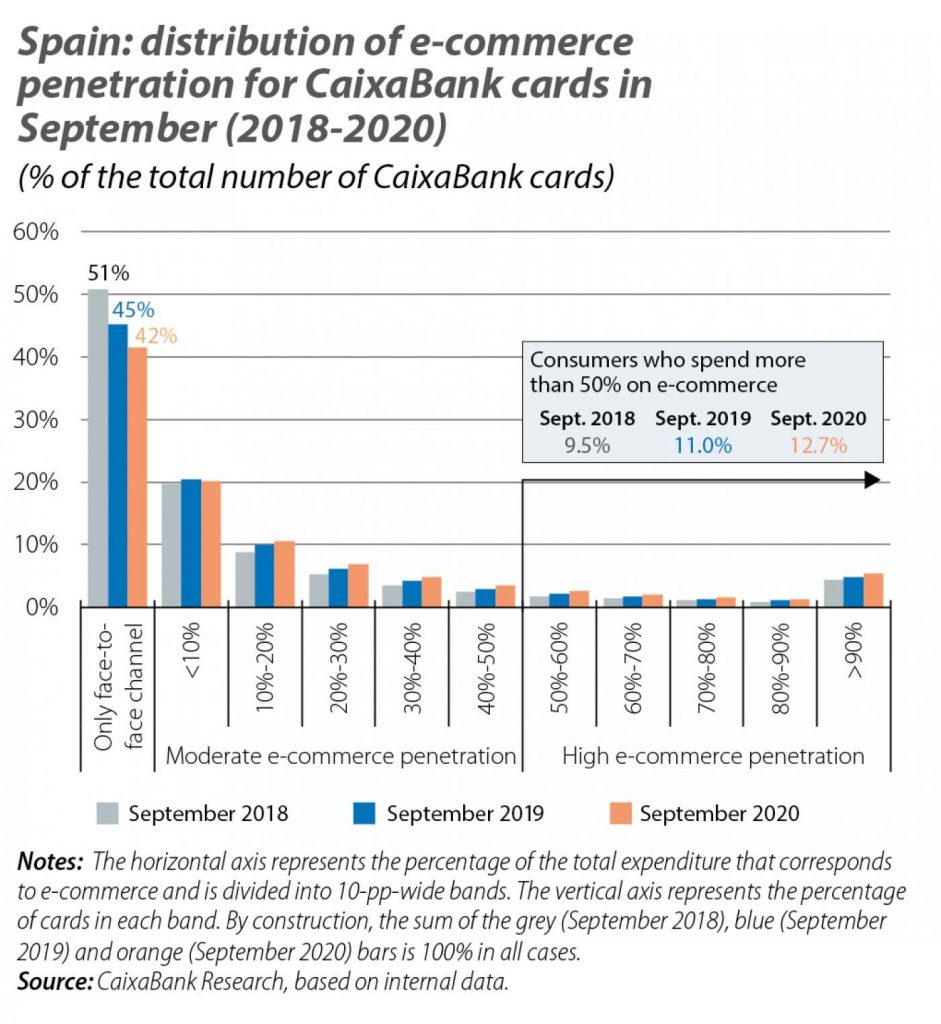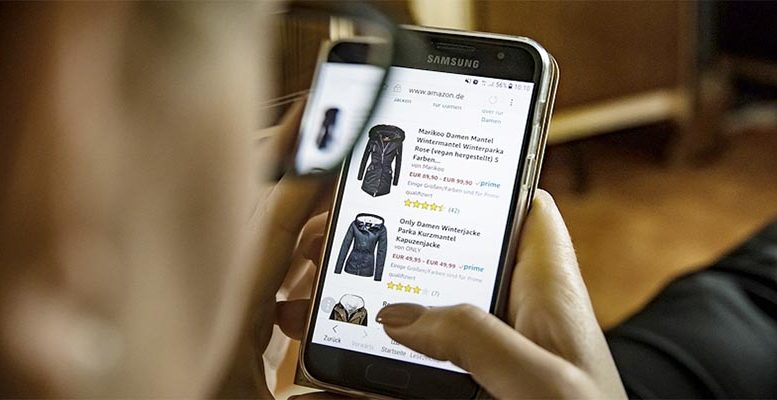Javier Ibáñez de Aldecoa Fuster and Eduard Llorens i Jimeno (CaixaBank Research )| The social distancing measures and lockdowns imposed to combat the spread of COVID-19 have resulted in a multitude of changes in consumption habits. Among them, there is one that is particularly significant: the rise of e-commerce. This way of consuming, based on the purchase and sale of products over the Internet, has provided a lifeline for many businesses that saw their face-to-face sales fall due to the social distancing measures, as well as serving as an alternative means for many consumers to continue to make their usual purchases in complete safety.
In this context, two questions arise: on the one hand, quantifying the extent to which the use of the e-commerce channel grew following the COVID-19 outbreak and, on the other, understanding whether we are on the cusp of a structural change or it is merely a temporary phenomenon that will be diluted once we reach the post-pandemic scenario.
In order to analyse the magnitude and persistence of the impact of COVID-19 on e-commerce, we apply big data techniques to anonymised data from card payments carried out by CaixaBank’s 13.5 million customers. The wealth of this data allows us to calculate, for each card and month of the year, what proportion of its total expenditure corresponds to online purchases. Using this proportion, we will assign each card a degree of e-commerce penetration, ranging from zero penetration (0% of total expenditure corresponding to online purchases) to full penetration (100% of total expenditure corresponding to online purchases).


In order to understand how online consumption patterns have fluctuated since the pandemic began, we analyse the results between 2018 and 2020 for the months of May and September. In fact, May is the first full month after the outbreak of the pandemic with sufficient face-to-face consumption to perform the analysis (in March and April, the mobility restrictions made spending of any kind besides online shopping or the purchase of basic goods practically impossible). September, meanwhile, is the last month for which we have records at the time of writing this article.
According to our results, there was a sharp rise in the use of e-commerce in May. Specifically, the percentage of e-commerce spending rose from 13.8% in May 2019 to 19.8% in May 2020. There is a sharp drop in the fraction of cards consisting of exclusively face-to-face consumption, from 47% of the total in 2019 to 40% in 2020, as can be seen in the first chart. In contrast, the number of consumers whose card spending consisted of more than 50% e-commerce increased considerably, from 10.2% of the total in May 2019 to 19.0% just one year later.
The above data indicate that the COVID-19 outbreak had a significant impact on the penetration of e-commerce at the beginning of the pandemic. However, this is somewhat to be expected given that Spain was still in a state of alarm in May and, while face-to-face shopping was allowed, capacity limits and rules on social distancing between customers posed an impediment to face-to-face consumption. It is therefore likely that some of the e-commerce purchases undertaken during this month were forced by the situation.
On this note, in order to determine whether there has been a permanent change in consumers’ habits, we will now analyse the results for the month of September. As can be seen in the second chart, some of the changes observed in May have been undone. For instance, the proportion of consumers who made solely face-to-face purchases in 2020 was only 3 pps lower than in 2019, a smaller decline than that observed between 2018 and 2019 (6 pps). Those whose card spending consisted of more than 50% e-commerce, meanwhile, rose by 1.7 pps, a very similar increase to that registered between 2018 and 2019 (1.5 pps). In the light of these results, while it is true that the use of non-face-to-face channels is greater in September 2020 than in the previous year, this growth is in line with the growth of e-commerce that we have seen in previous years.
In short, the results show that the pandemic had a very significant impact on the penetration of e-commerce during the months marked by lower population mobility (first chart), but they do not suggest that the historical growth trend of e-commerce is accelerating (second chart). Nevertheless, these results must be interpreted with caution for various reasons. Firstly, the data we are analysing are aggregated, so we cannot observe the disparity that there is almost certain to be between different sectors (consumption of essential goods versus durable goods, etc.). Secondly, as a recent study reveals, only 6.5% of Spanish SMEs offer their goods or services via e-commerce, posing a major barrier for consumers who might want to buy from their usual shop online but can only currently do so in person. In this regard, if the pandemic leads to a process of greater digitalisation that allows many companies to sell through e-commerce, then this channel can be expected to take a new step forward and to narrow the gap with face-to-face shopping.





